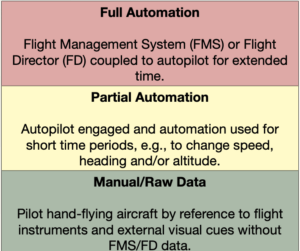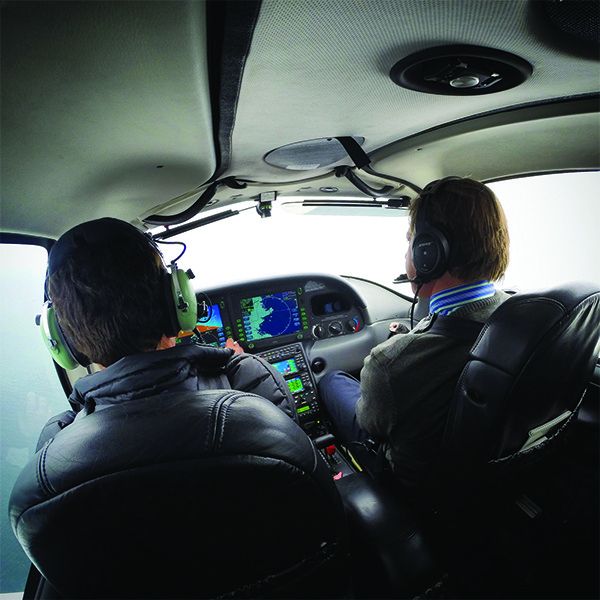Cessna 12345, the tower is changing runways. Fly heading 040, direct TILLE to join the localizer for the ILS Runway 1R approach.” How many times have you heard something similar, if not for you then for another airplane on the frequency? If we or they are doing it right, the approach to the first runway was already set up, with the appropriate frequencies dialed in, the approach fully briefed and the procedure plate out for quick reference. And the autopilot was set up to intercept and track the localizer inbound, engage the glideslope and fly you down to the runway.
Now, you’ve got to undo all that: find the new approach plate, dial in/confirm the frequencies, adjust any heading and altitude bugs, brief the new decision height and a different missed approach procedure. That can be a busy time in a single-pilot cockpit, with not much in the way of a margin for error. Depending on the equipment in your panel and the level of automation it allows, you could find yourself head-down, pushing buttons for several seconds, as the airplane goes its merry way. In the process, you’ve likely lost all situational awareness and wound up way behind the airplane at a critical time.

Warren Vanderburgh sought to simplify our understanding of the various automation levels present in modern cockpits. His basic three automation levels, distilled from his video presentation into the table at right, offers equipment options that may not be present in a typical general aviation instrument panel. But we can easily adopt the basic idea—raw data, short-term automation and long-term.
One way for GA pilots to embrace this three-level concept is to hand-fly the airplane when changing altitude or heading, then re-engage the autopilot when the new configuration is established. But the real value of understanding these automation levels comes into play when the magic is taking you somewhere you don’t want to be. You’ve dialed in a heading of 113 degrees instead of 013, for example. Disengage, fly manually to the new heading, and then reconfigure the panel and re-engage the automation.
THE PROBLEM
There’s no question modern automation in our cockpits has enhanced the efficiency of many flight operations. At the same time, there are numerous examples of the ways automated cockpits can betray their promise and leave pilots and crews struggling to react when the “magic” does something unexpected or finds itself unable to continue and just trips offline, leaving a human to clean up the mess. Thankfully, the outcome of such an event rarely is catastrophic, but it does happen, as the investigation into the Air France Flight 447 crash attests.
And it’s not a new problem to aviation. In 1997, American Airlines Captain Warren Vanderburgh gave his “Children of the Magenta Line” presentation, which has since become something of a cult classic among pilots. (It’s on YouTube: tinyurl.com/SAF-Magenta.) In his presentation, Vanderburgh accomplishes several tasks of value to all pilots, perhaps primary among them distinguishing between different automation levels in the cockpit. The sidebar below highlights one portion of his presentation, involving the different levels of cockpit automation.
Vanderburgh’s emphasis is on picking the appropriate level of automation for the task at hand. One of his examples involves a runway change in visual conditions. The crew originally had been told to expect, say, the left runway and had been vectored toward it. Twelve miles out, ATC changed the runway on them, to the right side. The crew went heads-down, reprogrammed the flight management system for the right runway and landed, only to discover they were still on the approach control frequency and hadn’t been cleared to land.
In such an instance, Vanderburgh argues it would have been far better to disengage the automation and hand-fly the airplane, bank toward the adjacent runway and align the airplane, and then land it (after switching over to the tower and getting a landing clearance, of course).
As technically advanced aircraft (TAA) were first being introduced into the general aviation fleet, University of North Dakota researcher Dr. Charles L. Robertson conducted a study of single-pilot resource management (SRM). Among the study’s findings was a set of best practices for pilots to employ aboard TAAs, a key component of which is automation management. This lightly edited passage from the study addresses how to use automation in high-workload situations:
“The appropriate level of automation…will depend on how much time the pilot has to program and activate these procedures. For example, if ATC issues a change to the clearance that requires a turn away from the entered flight plan course, the HDG mode will most likely be need to be selected with the heading bug being set for a turn in the proper direction and then refined as the correct heading is determined, this assumes insufficient time is available to select and activate the procedure before the turn is needed. Once the procedure is loaded and activated, you can reset the autopilot to the NAV or APP mode as desired. Remember to check the flight plan page (FLP) to ensure that the proper leg is active and the proper waypoints are in the flight plan.”
WHICH FLIES BETTER?
With the advent of increased automation, it’s become an article of faith that the automated systems generally will fly the airplane more accurately than a human. They maintain altitude and heading better, for example, and perform turns onto new courses at the point in the flight plan previously programmed. The automation also doesn’t get tired or bored and drops a wing.
But it’s not the smartest pilot in the cockpit. That’s you, and only you can override the automation when it’s not doing what you want, or what you don’t understand. When everything is relaxed, like at cruise, automation can help relieve the boredom and reduce fatigue as the pilot plans for the letdown, approach and landing. But when nothing is relaxed and panel-configuration changes must be made quickly, it’s entirely appropriate to step down a notch from the automation level that’s in place.
A common example might be using heading mode to get started toward the new fix in a clearance while you select the flight-plan mode on your navigator and enter the new route, or select a different approach than you were told to expect. You’re still using the automation but, since it’s being reconfigured, unintended consequences—like putting in the wrong fix—can suddenly take you places you don’t want to go.
Ultimately, the pilot has to fly the airplane. Letting it take control when workload is low reduces fatigue, among other benefits. When workload is high, however, we may want to reduce the level of automation, to ensure the tasks we must perform are correctly accomplished before George takes over again.
Jeb Burnside is this magazine’s editor-in-chief. He’s an airline transport pilot who owns a Beechcraft Debonair, plus the expensive half of an Aeronca 7CCM Champ.




